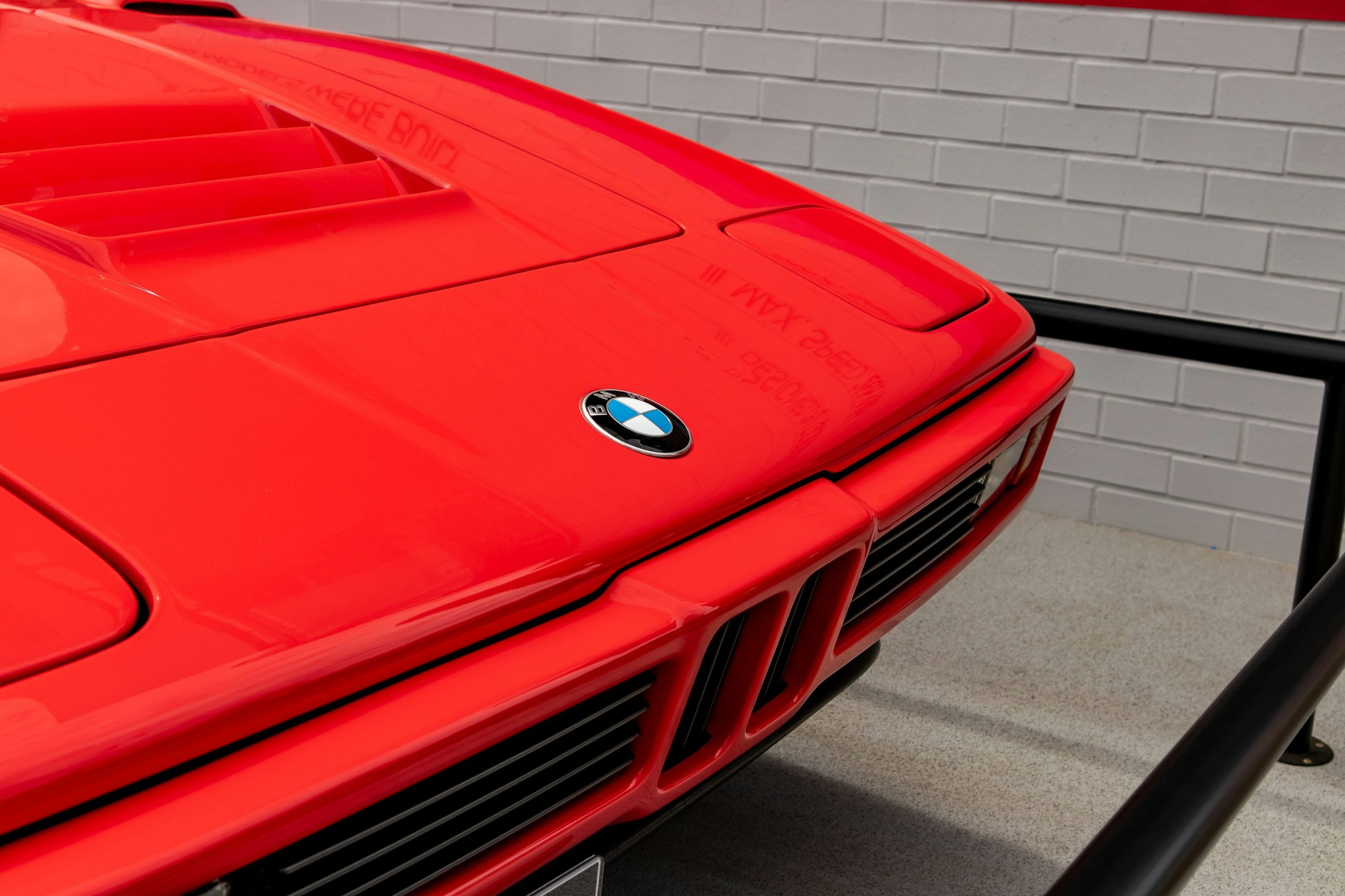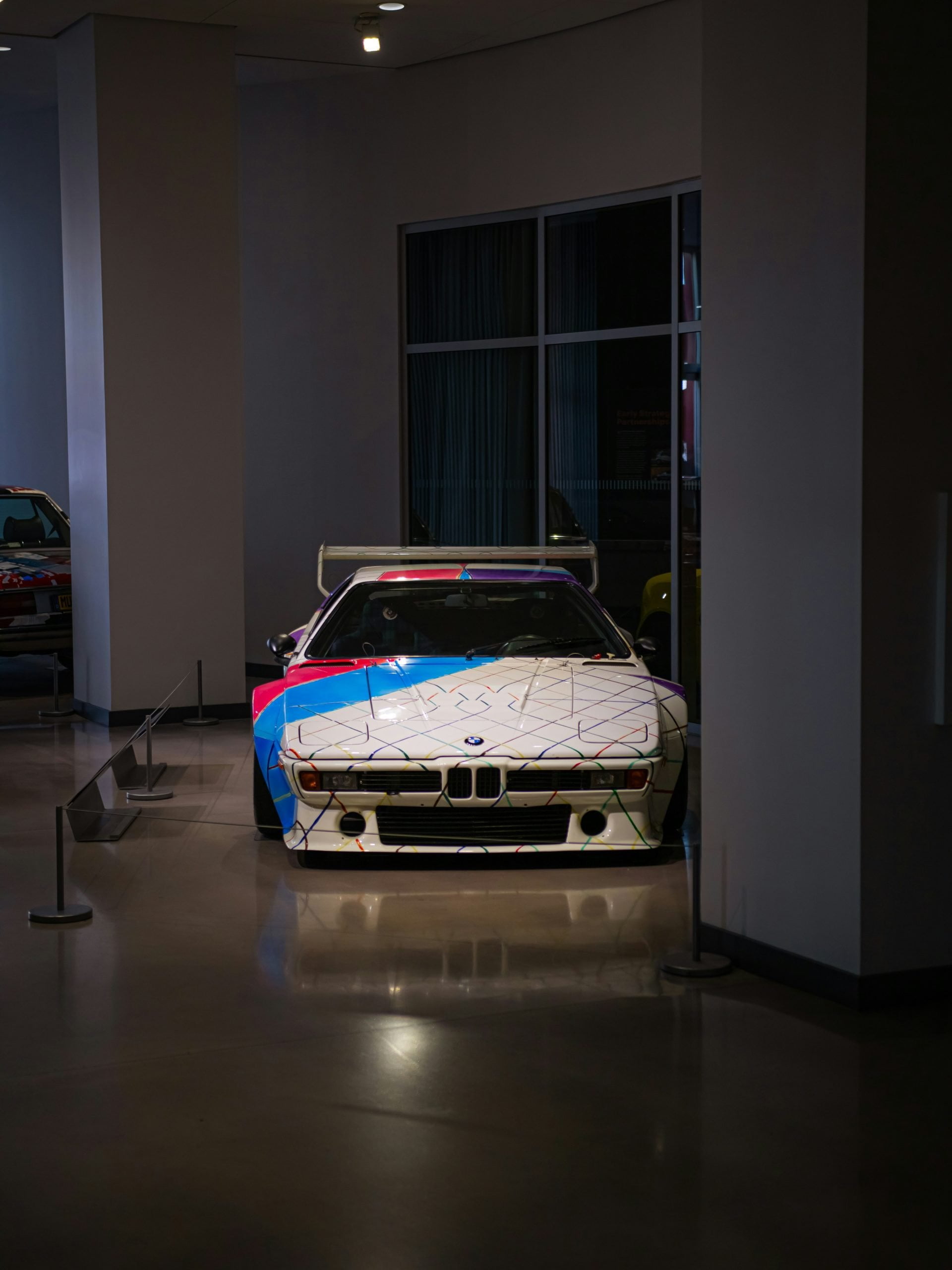1978 BMW M1
The BMW M1, produced between 1978 and 1981, is a car that stands out in automotive history for its design, performance, and rarity. As BMW’s first and only mid-engined sports car, the M1 was a bold statement of the brand’s engineering prowess and racing ambitions. Its creation marked the genesis of BMW’s now-legendary M division, setting the stage for a series of high-performance vehicles that would follow.



The BMW M1 project began in the early 1970s, driven by BMW’s desire to enter the world of motorsport, specifically Group 4 and Group 5 racing. To homologate the car for competition, BMW needed to produce at least 400 road-going versions. The M1 was born from this ambition, with its development involving some of the biggest names in the automotive industry. BMW initially collaborated with Lamborghini for the development of the M1. Lamborghini was to provide expertise in chassis design and assembly. However, due to financial difficulties at Lamborghini, the partnership ended prematurely. BMW took over the project, completing the car with the help of other Italian suppliers and ensuring its final assembly at Baur, a German coachbuilder.
The design of the BMW M1 was the work of Giorgetto Giugiaro, one of the most renowned automotive designers of all time. Giugiaro’s creation featured a sleek, low-slung profile with sharp lines and a wedge-shaped silhouette. The M1’s pop-up headlights, distinctive louvered rear window covers, and aggressive stance made it an instant classic in terms of aesthetics.
At the heart of the BMW M1 was a 3.5-liter inline-six engine, designated as the M88/1. This engine, developed by BMW’s Motorsport division, produced 273 horsepower and 243 lb-ft of torque in the road-going version. In racing trim, the engine could produce significantly more power, showcasing its versatility and performance potential. The M1’s engine featured advanced technology for its time, including a four-valve per cylinder head and mechanical fuel injection. This allowed the car to achieve a top speed of approximately 162 mph and accelerate from 0 to 60 mph in just 5.6 seconds, impressive figures for the late 1970s.





The M1’s mid-engine layout provided an ideal weight distribution, contributing to its exceptional handling characteristics. The car featured a tubular steel spaceframe chassis, which provided rigidity and lightness. The suspension setup, with independent double wishbones at all four corners, ensured precise and responsive handling. The M1 was equipped with ventilated disc brakes and a limited-slip differential, further enhancing its performance and drivability. These components made the M1 not only fast in a straight line but also highly capable in corners, living up to its racing pedigree.
The BMW M1 gained prominence in the motorsport world through the Procar Championship, a one-make racing series that supported Formula 1 races in 1979 and 1980. The series featured identical M1 cars driven by top F1 drivers and privateers, providing thrilling and competitive racing. The Procar Championship not only showcased the M1’s capabilities but also helped build its legendary status. The M1’s legacy extends beyond its racing success and limited production run. It served as a technological and design benchmark for future BMW models. The M88 engine found its way into the BMW M635CSi and the iconic E28 M5, bringing the M1’s performance pedigree to a broader audience.
With only 453 units produced, including both road and race versions, the BMW M1 is a rare and highly sought-after collector’s item. Its combination of stunning design, racing heritage, and BMW engineering makes it a prized possession for automotive enthusiasts. Prices for well-preserved examples have soared in recent years, reflecting its status as an iconic supercar. The BMW M1 continues to be celebrated by enthusiasts and collectors for its timeless design and exhilarating performance. It represents a unique chapter in BMW’s history, embodying the brand’s commitment to innovation and excellence. The M1’s influence is still felt today, as it set the standard for BMW’s M division and its future high-performance models.